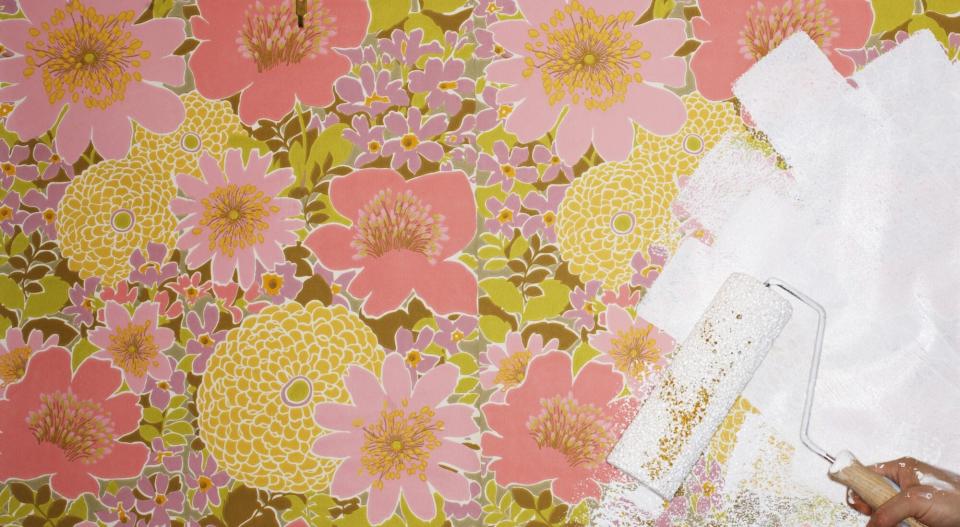Here's What To Know About Painting Over Wallpaper
Wallpaper can make or break a room. It can look rich and elegant, or it can peel, turn yellow, and look outdated. If you're dealing with the latter, you might be wondering if you can paint over wallpaper. The answer is yes, and we went to the experts to get all the tips and tricks for doing it right. Get ready to transform your walls with a fresh coat of paint and say hello to a beautiful new room.
According to, Matt Kunz, President of Five Star Painting, a Neighborly brand, in most cases, you can paint over wallpaper. In fact, he says, it makes sense in scenarios where removal would be excessively costly. It also makes sense in situations where removing the wallpaper would damage your wall (for instance, if it was installed directly on top of plaster or drywall). Kunz adds you might also be better off removing the wallpaper if it is badly damaged or has a texture you don't like since a mere coat of paint isn't going to fix those problems.

Martin Poole / Getty Images
Supplies
How to Paint Over Wallpaper
First, clean the area thoroughly. If dirt and debris are clinging to your wall, they'll become embedded in your new paint.
Maggie Griffin, founder and lead designer, at Maggie Griffin Design, says the next step is to inspect your wallpaper carefully. If it's coming apart at the seams or peeling, you'll need to reglue it so the surface is smooth and flat. Let it dry before moving to the next step.
If there are rough places on the wallpaper, Griffin recommends covering them with a small amount of putty. Next, lightly sand them with 220 grit sandpaper. Clean off the debris and let the wall dry.
Use painter's tape to tape off the baseboards and edges you want to protect. Lay down newspaper or a drop cloth to make sure the paint doesn't trickle down to your floor.
Next, cover the wallpaper with an even coat of primer. Kunz says an oil-based primer is best because latex or water-based primers may reactivate the glue and loosen the wallpaper. Let the primer dry overnight.
Now you're ready to paint. Cover the wall with an even coat. Read the instructions on the can to make sure you let it dry as long as recommended before following up with a second coat. Pro tip: Kunz says to avoid paints with a high sheen, such as satin, which will be more likely to show imperfections or texture in the wallpaper.

